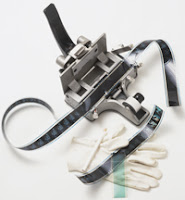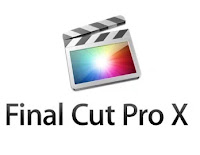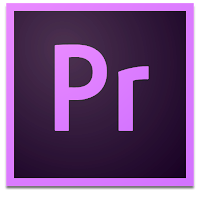History of editing
The Cinematograph
The cinematograph was the first film camera which not only acted as a camera but also as a film projector and printer. It was created by french inventor Leon Bouly in 1892. Unfortunately Bouly had insufficient funds to develop his ideas properly so sold the rights and patents to the Lumiere brothers and in 1895 they released the creation as their own.

The Lumiere brothers worked to create the camera better than Thomas Edison's Kintograph. They added a projector and made it lighter so it was easier to transport. Unlike the Kintograph, which was only viewable by one person at a time, the cinematograph could project the images onto a larger area allowing for a larger audience.
Alice Guy

Alice Guy was the first female filmmaker/director from the early 20th century. Guy Experimented with colour-tinting, sound syncing and special effects in her films.
She also experimented with hand-colouring, a process which involved adding colour to a black and white film reel by dipping it in a dye. This would stain the cells and therefore create a coloured film cell.
https://vimeo.com/207343765
Edwin S. Porter

Edwin Porter worked at Vitascope in the late 1800's. Whilst there he re-edited some of George Melies one act reels and created a 15 minute programme. Porter then went on to attempt to create his own camera and projector but failed and then became a film director and producer. He edited footage from a documentary and combined it with his own footage to make '
The Execution of Czoyosz'.
https://www.youtube.com/watch?v=FFbUVYWkbOA
Porter then created 'Life of an American fireman'. In this he used stock footage of fires and firemen and made them more dramatic with his own shots. Audiences were amazed with what they were seeing, showing that Porter had discovered an original way of how to tell his stories.
D.W Griffiths

David Llewelyn Wark Griffiths was responsible for many of the editing techniques we use today, from parallel editing to tonal editing. With his films film, 'The sealed room', Griffiths used montages to explain his story and cross-cutting to show two events happening.
His most popular film was 'The birth of a nation' released in 1915. In this film there are various techniques and shots such as; long shots, still shots iris effects and many more shots that we use today.
https://seanmaguireblog.wordpress.com/2012/05/14/early-history-of-editing-techniques/
https://www.fandor.com/keyframe/the-inception-of-movie-editing-the-art-of-d-w-griffith
Kuleshov effect
Between the 1910 and 1920 Les Kuleshov invented the effect that is widely used today. The effect consists of separate shots that can be, depending on how they are edited, can tell a different story.
















































